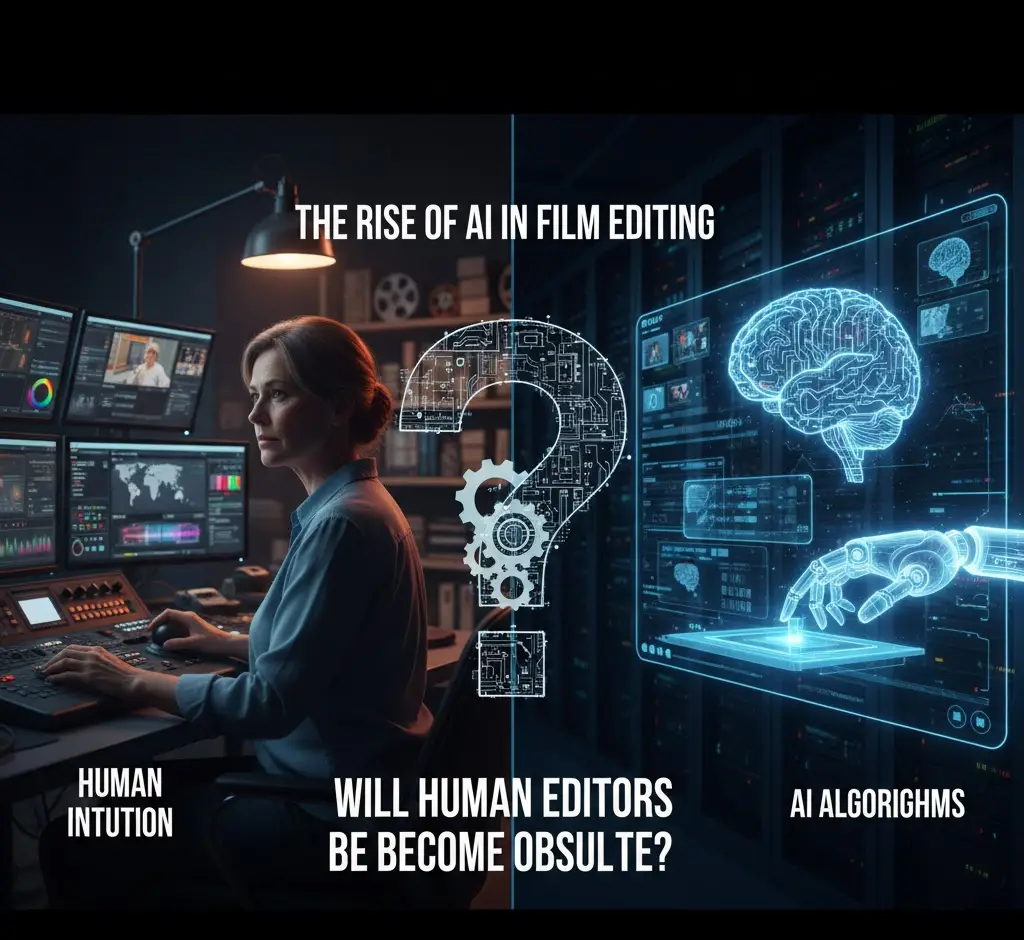Film editing has always been that one realm where creativity and technical skill meet. Traditionally, editors have been the unsung heroes who work behind the scenes, molding hours of raw footage into a product that resonates with audiences. But times are changing as technology advances, and AI will start to play an increasingly major role in film editing. The important question now is, will human editors become obsolete?
AI is already making its presence felt across industries, and film editing is no different. From automating mundane tasks to enhancing post-production workflows, AI promises to change the game in film editing. But while AI is undeniably powerful, does it have the creativity, intuition, and nuance that human editors bring to the table? Let’s dive into the rise of AI in film editing, explore its potential benefits, and examine whether human editors are at risk of being replaced.
How AI is transforming film editing
AI technologies have considerably improved over the years, making machines capable of performing tasks previously restricted to humans. Applications in film editing vary from automatically cutting and changing scenes to enhancing visual effects. Probably the most exciting use of AI in film editing is the capability to analyze raw footage and suggest edits either based on predefined parameters or even learn from previous edits.
AI-powered tools like Adobe Premiere Pro’s “Auto Reframe” automatically adjust aspect ratios for different platforms, saving editors hours of work. In addition, AI software is able to recognize the key moments within a film, such as the most dramatic or emotional scenes, and to suggest edits that make those moments pop. Some even detect mistakes, such as when audio and video are misaligned, and offer suggestions for correction.
Another area of increasing innovation related to AI involves color grading and visual effects. AI algorithms can analyze scenes in seconds and alter color palettes to match the desired tone or atmosphere of a film. These tools also help create special effects, enhancing scenes that would take a human editor days or even weeks to achieve.
The Benefits of AI in Film Editing
Efficiency and Speed: One of the major benefits of using AI within film editing is the speed at which it can operate. The editing of a feature-length film could take several months; however, AI will be able to automate most of these processes, ultimately speeding up the workflow. Tasks such as sorting footage, trimming clips, and matching audio to video can all be done at a much quicker rate by AI, freeing up human editors to work on more creative aspects of the project.
Cost Savings: AI tools can help studios save money by reducing time and labor for certain tasks. This is especially important for smaller studios or independent filmmakers who might not have the budget to hire large teams of editors. Using AI means filmmakers can turn out high-quality content sans breaking the bank.
Consistency: AI algorithms are built to be precise and consistent. Unlike human editors, who might have different preferences or styles, AI tools apply the same rules to each project, ensuring the uniformity that can be beneficial in certain scenarios of editing. For example, if a director wants a specific visual style or color grading across multiple films, AI can make that process more uniform and less prone to human error.
Innovation: AI is also enabling new creative possibilities. Free of the drudgery of repetitive editing, human editors are able to try out more innovative techniques and ideas enabled by AI. It could prompt brainstorming on how to tell a story differently or experiment with different editing styles, to say nothing of pushing the boundaries of visual effects.
The Limitations of AI in Film Editing
For all its advantages, AI still has a long way to go before it could perfectly edit the film. While AI can scan through footage and make its editing suggestions, it lacks the emotional intelligence or the creativity that a human editor would bring into the film. Editing a film is more than just cutting and arranging clips; it involves understanding the emotional journey of the characters, the pace of the narrative, and the tone of the film. Human editors are able to bring a deep knowledge of the emotional arc of a story and the way it will affect audiences, something AI has yet to master.
AI also lacks nuance. In film editing, the little things may make all the difference, from timing cuts to subtly introducing a scene. AI algorithms may not always pick up on these nuances, sometimes resulting in awkward or jarring transitions. A human editor can make intuitive, experienced decisions about how the film should flow to create a seamless, emotionally engaging product.
Secondly, film editing is a collaborative process that involves the incorporation of various creative minds. The director, producer, and other production members bring their vision into the film, and the human editor plays an essential role in translating such a vision into a final cut. AI, helpful in simplifying tasks, lacks the capacity to interact in these collaborative dynamics or make sense of the bigger picture the same way a human editor does.
Will Human Editors Become Obsolete?
While AI will continue to increase its role in film editing, human editors will likely not become obsolete anytime soon. Instead, AI will likely serve as a tool that complements the work of human editors rather than replaces them. AI can handle the repetitive, time-consuming tasks that often slow down the editing process, freeing human editors up to focus on the more creative and subjective aspects of their craft.
The rise of AI in film editing will also continue creating new jobs. As AI editing tools become more accepted, editors will have to learn to work with the technology. That might mean learning a new software or developing a deeper understanding of how AI can augment their editing process. In fact, the integration of AI could lead to a faster and more collaborative workflow with the human editor playing the key role in guiding AI tools and making final creative decisions.
Conclusion
The rise of AI in film editing is a significant milestone in filmmaking. AI has the potential of streamlining workflows, improving efficiency, and amplifying creativity but remains far from replacing the human touch in film editing. Human editors add an emotional intelligence, creativity, and nuance to their work that simply can’t be replicated by AI. While AI will continue to be an invaluable tool in the editing process, human editors will likely never become obsolete.
Instead of fearing the rise of AI, editors should embrace it as a tool to enhance their work, streamlining their creative process. In the end, the collaboration between the human editor and AI could very well drive even more groundbreaking and exciting development in the world of film editing, which would push the boundaries of what is possible on the big screen.


Leave a Reply